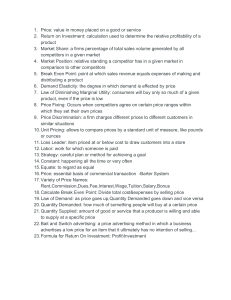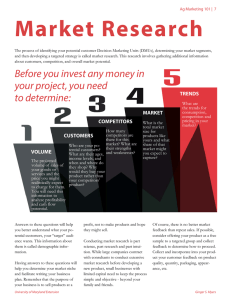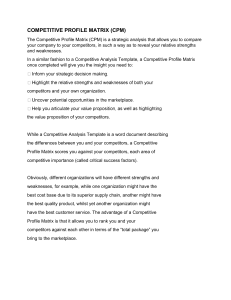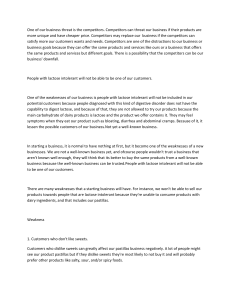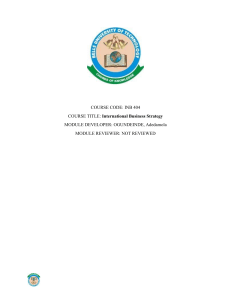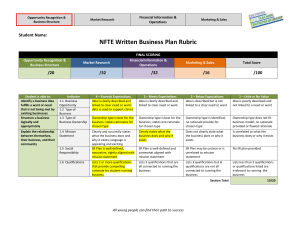Sample Marketing Plan Outline
advertisement
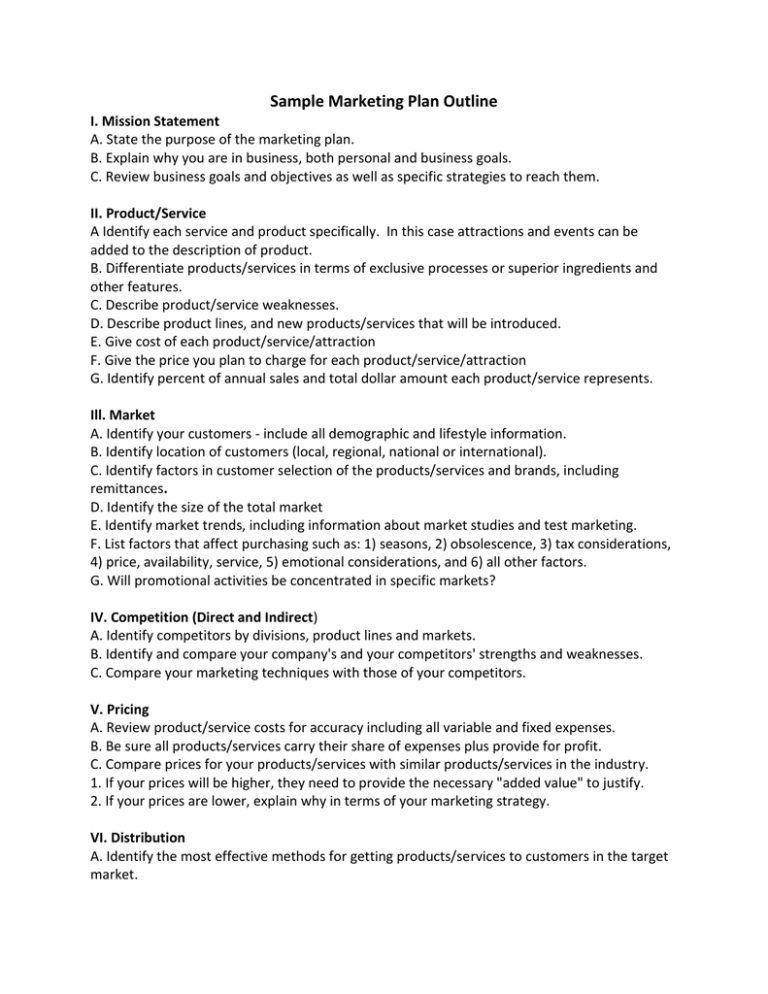
Sample Marketing Plan Outline I. Mission Statement A. State the purpose of the marketing plan. B. Explain why you are in business, both personal and business goals. C. Review business goals and objectives as well as specific strategies to reach them. II. Product/Service A Identify each service and product specifically. In this case attractions and events can be added to the description of product. B. Differentiate products/services in terms of exclusive processes or superior ingredients and other features. C. Describe product/service weaknesses. D. Describe product lines, and new products/services that will be introduced. E. Give cost of each product/service/attraction F. Give the price you plan to charge for each product/service/attraction G. Identify percent of annual sales and total dollar amount each product/service represents. Ill. Market A. Identify your customers - include all demographic and lifestyle information. B. Identify location of customers (local, regional, national or international). C. Identify factors in customer selection of the products/services and brands, including remittances. D. Identify the size of the total market E. Identify market trends, including information about market studies and test marketing. F. List factors that affect purchasing such as: 1) seasons, 2) obsolescence, 3) tax considerations, 4) price, availability, service, 5) emotional considerations, and 6) all other factors. G. Will promotional activities be concentrated in specific markets? IV. Competition (Direct and Indirect) A. Identify competitors by divisions, product lines and markets. B. Identify and compare your company's and your competitors' strengths and weaknesses. C. Compare your marketing techniques with those of your competitors. V. Pricing A. Review product/service costs for accuracy including all variable and fixed expenses. B. Be sure all products/services carry their share of expenses plus provide for profit. C. Compare prices for your products/services with similar products/services in the industry. 1. If your prices will be higher, they need to provide the necessary "added value" to justify. 2. If your prices are lower, explain why in terms of your marketing strategy. VI. Distribution A. Identify the most effective methods for getting products/services to customers in the target market. B. Identify need for warehousing of products and for distribution channels if not sold direct to buyer. VII. Promotion Mix A. Describe potential advertising program - discuss the following: 1. Possible use of ad agency and/or in-house ad department 2. Media choices, how selected and target audience 3. Project expenditures for each medium and product/service B. Describe potential public relations/publicity activities - i.e. business opening. VIII. Sales Forecasting A. Review sales history of competitors through secondary research. B. Show recent sales trends in industry. C. Make any seasonal adjustments. D. Project sales and income for next four quarters. (See business plan cash flow projections.) IX. Action Plan A. List all marketing strategies/activities. B. Prioritize all strategies by levels of importance. XI. Production - Determine level of production/service necessary to meet demand generated by marketing.
